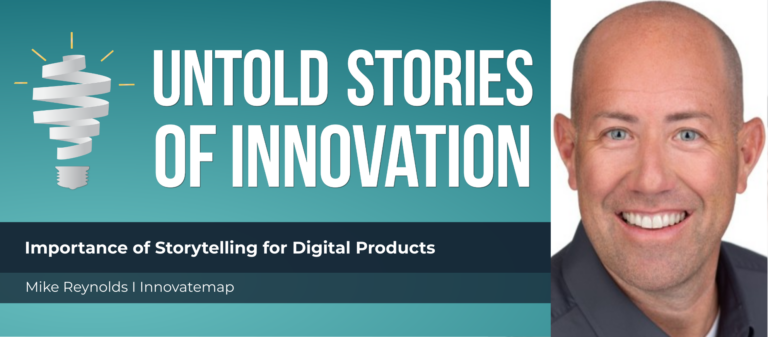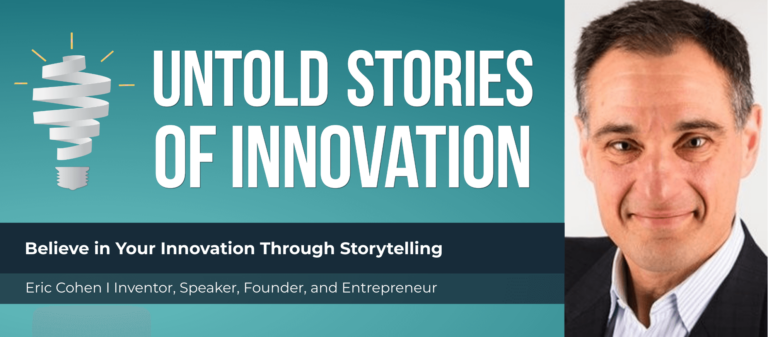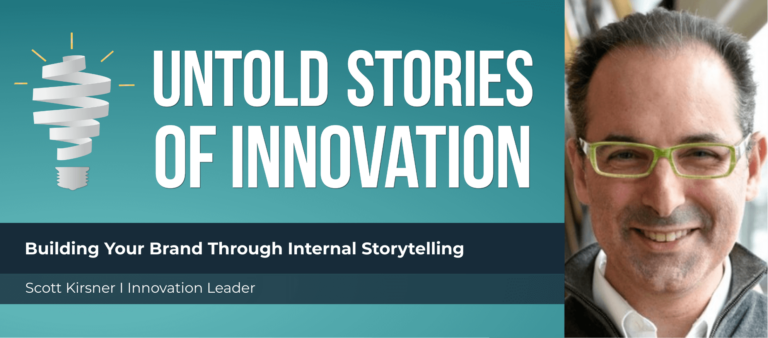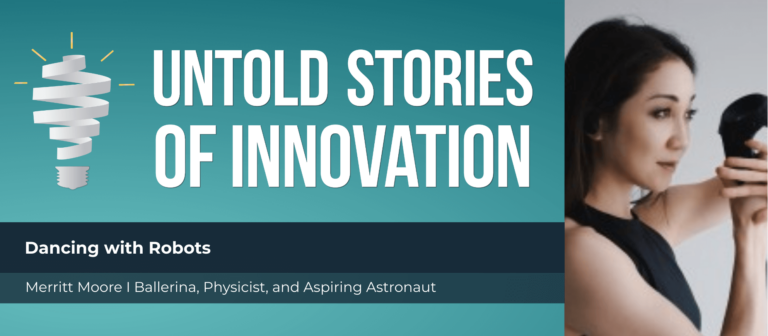Cultivating Innovation Culture with Kate Maxwell of Raytheon Technologies
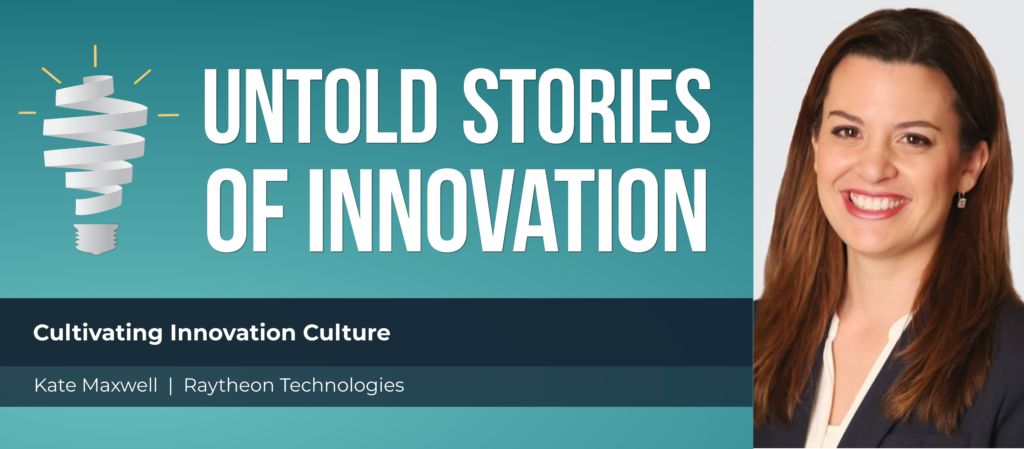
Untold Stories of Innovation
“Our focus was never about technology. It was always about people because they're central to the innovation story.” —Kate Maxwell, Technical Director & Innovation Leader at Raytheon Technologies
From today’s episode you’ll learn:
Why do stories matter to the innovation process? What values can be instilled in innovators who share stories? How do innovation leaders inspire creators to tell and share their success and failure stories?
Why do stories matter to the innovation process? What values can be instilled in innovators who share stories? How do innovation leaders inspire creators to tell and share their success and failure stories? We speak with technology leader, Kate Maxwell, who acts as Technical Director & Innovation Leader at Raytheon Technologies. Our conversation unpacks ways to open the doors of innovation across industry. From supply chain to finance, every team is capable of innovation, and storytelling is the key to bringing those ideas to life.

Kate Maxwell is Technical Director & Innovation Leader at Raytheon Technologies. She fuels Raytheon’s mission as an aerospace and defense company for commercial, military, and government entities. As the founder of a global corporate initiative, Kate fuels innovation across all functions and labor grades within organizations. She acts as a technology leader, public speaker, and innovator to open the doors of innovation and expand areas of growth across engineering.
untoldcontent.com/trainings/innovation-storytelling-training
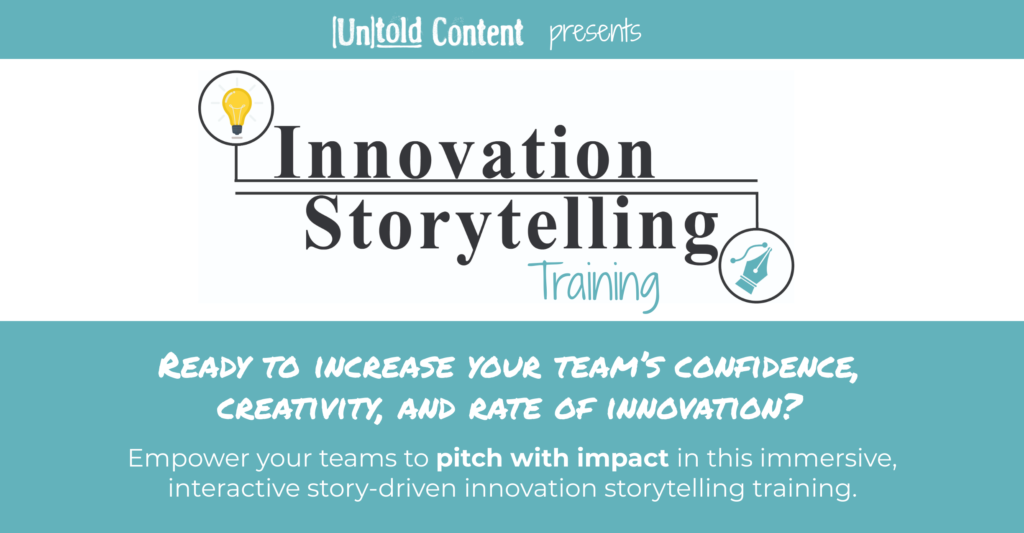 TRANSCRIPT
TRANSCRIPT
This episode is powered by Untold Content’s innovation storytelling training. Increase buy in for your best ideas in this immersive and interactive, story-driven experience. Where your teams refine storytelling techniques for their latest projects, prototypes and pitches—and get inspired by 25 epic examples of impactful innovation stories. Learn more at https://untoldcontent.com/innovationstorytellingtraining-2/.
Katie: Welcome to Untold Stories of Innovation, where we amplify untold stories of insight, impact and innovation. Powered by Untold Content, I’m your host, Katie Trauth Taylor. Our guest today is Kate Maxwell. She is Technical Director and Innovation Leader at Raytheon Intelligence and Space. She is an incredible innovation leader, an engineer in her background, and she’s an accomplished technology leader. Kate, I’m so grateful to have you on the podcast today.
Kate: Katie, thank you for having me. I love the content that you’ve been putting out into the world. And I’m so excited to be here. Thank you.
Katie: Definitely. So I want to start with actually your engineering background, because one of my favorite things as a technical and scientific writer is to collaborate and work with engineers. I just — I love how engineers think. And I think pairing writers with engineers is one of the most magical things that you could do in the universe, in my opinion. So tell me a bit more about your background as an engineer, and now a leader of engineers, at Raytheon.
Kate: Sure. So I am a computer scientist by trade. I think that my interest in computing started when I was a kid. I’m a child of the 80s and my parents brought home a Commodore 64 in the early days — I know I’m dating myself here. But at home, you know, lots of kids are maybe not encouraged to tinker and try things and break things, especially when it comes to tech that might be somewhat expensive. My parents always took the approach of, you know what? Go, go enjoy it. Go try new things. If you break it, it’s no big deal. We’ll figure it out together. And I think that that instilled in me not only this love of computing, but kind of this fail forward mentality where I wasn’t afraid to try new things. And so —
Katie: I love that and it’s so challenging as — I’m a parent now. I think you’re also a parent. We’ve connected on this before. It’s a challenge as a parent to let your kids make messes, let them make mistakes. But I love that your parents instilled that in you. And they said, you know what, messes aren’t a problem. This is a way to learn and to grow. How cool.
Kate: Absolutely. And I’m a type A personality. So the mess thing is hard for me, too. I have two little boys at home. We’re battling that every day. But —
Katie: Especially now. You know, as we all work from home.
Kate: Oh, man. Yeah. But I think the important thing is really about the process and trying. Right. You don’t have to get it right every time. I just, I want my kids to try. And so I grew up with that mentality, and it has served me well in my career. I studied computer science as an undergraduate. I came to Raytheon not knowing what it meant to be an engineer or work in aerospace and defense. But I’ve had amazing mentors and champions who have helped me along the way. And, you know, especially as I started to get into the research and development world, maybe halfway through my career — I’m in 16 years now, so, you know, six, seven, eight years into my career — I started working with research and development. And I was surrounded by people who absolutely bought into that fail forward mentality. And they encouraged me to try new things and to bring forward big ideas even when they seemed crazy. And I’m a big believer that creativity is contagious. So it’s just been amazing to work in that environment surrounded by other people that are just big thinkers.
Katie: You know, in your time at Raytheon, you’ve done something incredibly impressive. You grew an innovation initiative from really a small experiment into a global scale effort. And it just got approval after approval to continue to let it grow. Can you tell us more about that initiative, what it looked like, and what that process was like getting buy-in and watching that scale?
Kate: Yeah, absolutely. So this is really my favorite thing I’ve ever done with my career. We call —
Katie: So far.
Kate: So far. But there’s a lot more to come. Yeah. So when I was working in research and development, I was the process and execution lead for the R&D portfolio for one of our businesses. And what that meant was I essentially was the right hand woman of the R&D director. You know, I oversaw our project budgets. My job was to break down any barriers to research that existed, whether it was supply chain or process or whatever it might be. I was there to help make sure that the principal investigators would be successful in their research. So as I was doing that, I was learning what works and what doesn’t when it comes to a research and development environment, and an environment that’s conducive to innovation. And so one of the things that we observed was that, you know, we’re a large company. The business I was serving had about sixteen thousand people in it. But it seemed like it was the same handful of folks that brought forward ideas for new R&D projects every year. And so we thought, you know, surely in a business of this size, with this many brilliant people — across all functions, not just engineering — there must be other ideas out there. How do we capture those and help people advance them and accelerate them inside of the corporate environment? So we took this idea and we put together kind of a business case or a pitch that we shared internally. And we were looking for like ten thousand dollars to start, just to stand up this virtual organization to help accelerate and inspire and empower innovation. So we got our 10 grand. We started hosting innovation challenges and pitch events and sharing this message of innovation with our people inside the company. And it just caught fire. I mean, truly, I think that it resonated with our workforce in a way that even we didn’t anticipate. So we grew this organization into a multimillion dollar global innovation engine that served not just our business, but really the enterprise. And we hosted international innovation roadshows to share stories and inspire people to innovate, you know, at our landed companies around the globe. It was just amazing. And the organization continues to this day. I’ve transitioned it onto one of my mentees who now leads it. And it’s just been a fabulous experience. And I’ve been so gratified to see how many amazing stories of innovation have come out of it.
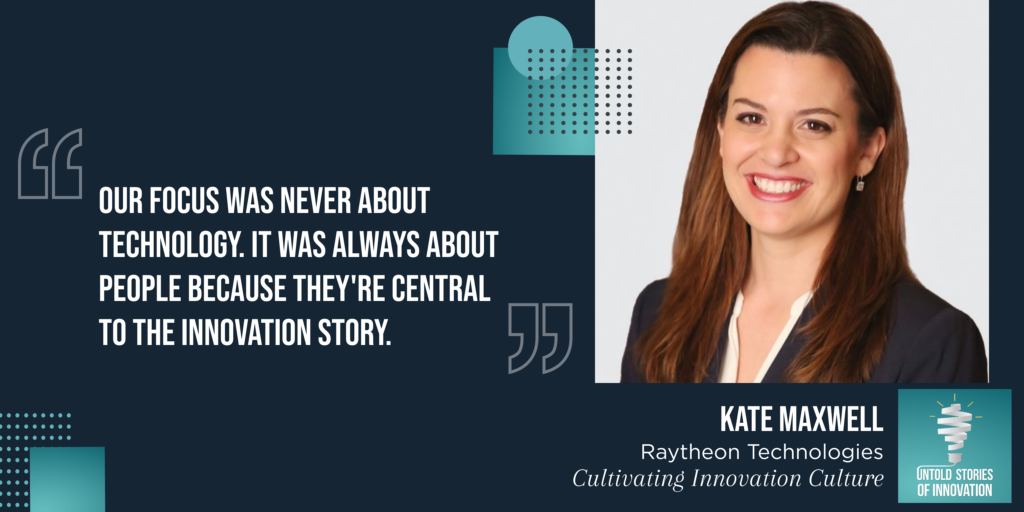
Katie: And the incredible thing is — and I want to definitely drill down a little more into the messaging and what worked, what was sticky, especially in the beginning — but what’s incredible to me about that is, whatever that messaging was, it transformed the culture. It made individuals who maybe hadn’t been part of the innovation roadmap in the past, it helped them to see themselves as being part of that or having the potential to be part of that. And that’s what I think is so incredible about internal innovation challenges and the storytelling and the messaging that’s so critical to getting that off the ground. And part of it — it sounds to me — is really about transforming how people see themselves so that everyone in an enterprise can say, yes, you know what, my ideas are valued and valuable and I have a medium by which to share them. And innovation is not just something that is siphoned off to the upper echelon or the few inside the company.
Kate: Yeah, you’re exactly right. And I think that was the — our big focus right from the start was on people, but on exactly what you said, making innovation, making research and development accessible to everybody inside of the company. You know, all too often, I think big corporate bodies lean on their technology organizations and their engineering folks to come up with the next big idea. But good ideas come from everywhere. And so that was something we really pushed right from the start. We had to figure out how to make the barrier to entry for innovation really low. Right. Instead of requiring a multi-page white paper that gets down into the technical weeds of how you might implement something, you know, we only required a Penta chart. And tell us what your idea is. Tell us how it’s gonna make a difference. Put together a super high level business case for why the business should care about this and try and quantify or articulate the impacts if you can. But you don’t have to be a deep subject matter expert to put those things on paper. And so by encouraging that rather than, you know, that multi-page white paper, like I said, we saw ideas come in from all functions inside of the company. And some amazing ideas were implemented by folks maybe in, you know, supply chain or contracts or finance, who didn’t necessarily have the technical know-how to go make it a reality. But they had this idea that had business value and could make a difference for our customers. So our job really was to inspire and empower people to innovate no matter where they were in the business. And I think that’s ultimately what made us successful.
Katie: Did that end up changing the mindset of the folks in R&D and the engineers to say, you know, my job is not just to be the best idea generator here — and executer. My job is now to be a powerful collaborator.
Kate: Oh, definitely. I think so. And I think, you know, that’s a culture change or a culture shift. In lots of technology organizations, your engineering organization kind of holds all of the power or all of the weight or all of the clout, so to speak. But we know that product-oriented teams that are integrated across multiple functions, that’s where you really get diversity of thought. So we put together lots of IPTs, or integrated product teams, where you’re oriented around the product, but you’re taking those ideas in from everywhere. And I think that folks certainly learned a lot more about their colleagues through that process. Right. Suddenly, you’re starting to break down those functional stovepipes that exist inside of a highly matrixed organization. But we were seeing better ideas and better results from those product teams as well. So that was absolutely key to our success.
Katie: I love that. OK. So I promised I wanted to drill down on the messaging and what made it stick. What helped spark that buy-in early on? And maybe also, how did the messaging and the way that you named it and the way that you called people to action, how did that change as you scaled this initiative?
Kate: Yeah, so I think — I had a small team of people I was working with early on in this process who are amazing and they deserve all the credit for making this thing a reality. But they probably got tired of me saying, guys, our number one job here is to keep this sold. You know, once we had buy-in from leadership on this innovation organization and we had funding to go accelerate and incubate new ideas and we had a budget for communications and for operations and making this thing run, we had to keep it sold. You know, we can’t just communicate once at the start of this and then go quiet and focus on these projects. We had to constantly be sharing the success stories. And then also the failure stories. You know, I’m a big believer that if you’re going to create that culture inside of corporate environments where you create room for folks to take risks and to fail forward, you have to share the failure stories, too. So one of the things we’re actually working on right now inside of Raytheon Technologies is putting together a podcast that we’re calling Face Palm Fridays, where we share maybe some of the things that didn’t go so well. Whether it’s on a research and development project or a transformation initiative or maybe even a major program. But then the key is, what do you learn from that? Right.
Katie: Yes.
Kate: How do we take that learning and go back and refine or do better? Or in some cases, you know, maybe take that exit ramp because something didn’t quite work out. But it’s about communicating those things early and often and in lots of different ways because you have audiences that want to receive their content in different ways. And so we stayed very close to our comms team throughout the innovation journey. Some of my best friends in the organization are communicators because they really hold the keys and own all of the magic to keeping things sold. So that has always been a major part of our strategy. I’m going to keep annoying my team with that, “guys, we got to keep it sold” mentality. But it is so important.
Katie: Yes. So that speaks so much to my heart. For the last few months, I’ve been working with an interdisciplinary research team to study brilliant failures. So what makes a failure an epic catastrophic failure and what makes it a really smart failure inside the innovation process. And exactly what you said, a failure that’s oriented towards learning. It’s really about minimizing the cost that was put into that failure or loss due to that failure, and maximizing the learning as much as possible. So I love Face Palm Friday. I think that’s brilliant. It’s one of the best failure narrative initiatives that I’ve heard of. So thank you for sharing that with us.
Kate: Yeah. Thank you. We’re excited about it. Now, the challenge is getting people who are willing to share stories. Right. So we’ll work on that. I think there’s probably going to be t-shirt and maybe some branded swag involved to convince people.
Katie: But, you know, it’s better sounding than, you know, “tell us about your failure Friday.”
Kate: Right. We have to make it a little bit fun.
Katie: Yes, exactly. So what were some of the storytelling approaches that you used? Was it e-mails that you sent out? Did you make videos? What kinds of narratives did you create, especially in the early days? And then how did it change?
Kate: Yes. So we, like I said, we used lots of different comms mechanisms to get the story out. So we have an internal Intranet — much like most big corporate environment, you know, entities. So we shared stories on there frequently about either customer challenges that we wanted to crowdsource ideas around — because I’m a believer that you can’t innovate in a vacuum. But if you give people a problem or a customer pain point, suddenly they can start thinking about, what are the ways we could tackle that? So we shared those stories — customer challenges, innovation, challenge topics. We shared stories of success — both about the ideas and the innovations that resulted from these challenges — but also about the career growth that our innovators were seeing as a result of taking those risks and bringing their ideas forward. We had some folks who received just massive injections of excitement and acceleration into their career as a result of getting involved with innovation. So we wanted to make sure that those stories were heard because then people could say, well, if they can do it and they saw this benefit from it, well, then I should consider getting involved, too. So we did that. We went on lots of road shows. Like I said, you know, this was pre-COVID environment, so we could still travel. So I was jumping on planes frequently, giving presentations, trying to share this message of excitement and passion around innovation and really why this makes a difference in the world and why it makes a difference for people, specifically. Our focus here was never about technology. It was always about people because they’re central to that innovation story. And then also, I would say, I think that when we’re communicating as innovators and technologists, I think we’re used to being in transmit mode, but we need to be in receive mode as well. And I’ve heard a few of your guests from prior podcasts talk about design thinking and the importance of leading with empathy and understanding and asking questions. That is so true. I mean, that’s really how you find that product market fit, right? An idea is just an idea unless you can find that transition path to reality and why it’s needed in the world. So we tried to teach stories of design thinking, getting paired with customers so that you can understand their challenges and pain points, because that’s truly where great ideas come from. By solving those sorts of things. So, yeah, lots of communication. And it was bi-directional. Right. We never wanted it to be a one way story.
Katie: I think everything you just spoke about, it speaks to the importance of thinking of innovation storytelling from multiple perspectives. So innovation storytelling is not just storytelling around the innovation itself or the technology itself. It’s storytelling at the front end to say, here’s how I’m going to articulate a customer pain point or customer need through the power of story, through the power of empathy. It’s in the process itself, saying, here is the story of the innovation team and the individual people who made this happen, the challenges they faced, the decisions they made well or didn’t make well and why. And then ultimately, of course, at the end of the day, we want to hear about the technology, too, and can celebrate it. But there’s so many different ways to think about the role that story plays and communication plays inside that whole process. And I love what you said about how sometimes technologists or scientists, we can think very transactionally about our work. You know, it’s time to present the information, I have to get everything right before I stand up there. But I think what you’re speaking to is a mindset of experimentation, which every scientist already knows and loves. But if you apply that mindset of experimentation to the storytelling that you’re trying to do, I think you’ll see much better results, right, than just sort of saying, this has to be a polished pitch deck that is locked down.
Kate: Yeah.
Katie: But what you’re saying is, approach that as a conversation, make sure that you’re trying some creative moves sometimes, see what works and what doesn’t work. And maybe even tell the listener, I’m experimenting here. Here’s story A and here’s story B. In our team lately, we’ve been — when we’re talking about some innovative products we’re trying to create right now, we’ve been giving each other the chance to pitch twice. So we’ll say, OK, I’m going to try it the first time. All right, rewind. I’m gonna try it a totally different way when I pitch this. And giving each other permission to not have it locked down and perfect at the very start. It kind of reminds me of the beginning of our conversation around, it’s OK to make a little bit of a mess in order to grow and learn.
Kate: That’s right. Yeah. And what you describe is kind of the focus group model, right. Where you will test certain messages with whatever group or audience you’re trying to reach. I’m a big believer in that. I’m an engineer by trade, like I said, I don’t have a lot of experience with design thinking or communications, not formally anyway. But lately, whenever I create something new, even if it’s about innovating inside the business, let’s say new business models or processes that we’re trying to implement. I will take a focus group approach and I will interview my constituents, you know, whoever the users would be. And we’ll put user personas together that articulate what it is that they care about and what their pain points are and where they want to go with their career. And then if you can figure out how to frame that innovation and your communication method around those users or those stakeholders, I think it’s so much more powerful. And you’re a heck of a lot more likely to have that message received in the way that you want it to be received. So, yeah, I love the focus group approach.
Katie: That’s great advice. And I think a lot of innovation teams are maybe familiar with taking that approach when they’re thinking about their customers and their customer journeys, but they’re not necessarily used to doing that internally, to say, OK, let’s build a persona around certain members of our sales team or certain members of our operations or manufacturing teams. And knowing a little bit about how to gain buy-in across the organization, I think that’s a really powerful way to apply, you know, persona mapping, persona canvases as well.
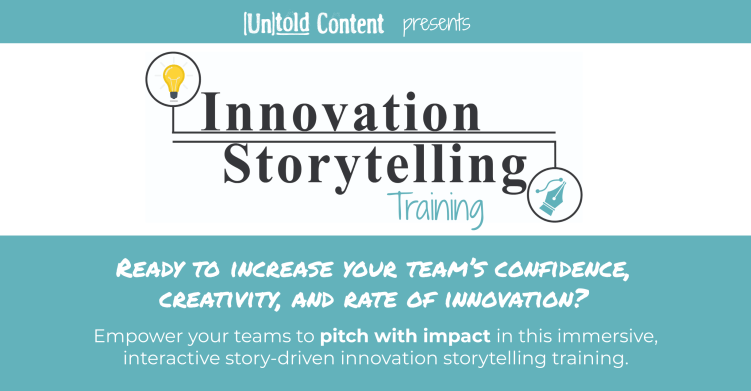
Kate: Oh, yeah, I’m a believer. I’ll even give you an example. So right now in Raytheon Technologies, we’re undergoing a digital transformation, much like lots of companies out there.
Katie: Yes.
Kate: You know, we’re trying to figure out how to embed Agile and DevSecOps into our processes, and it’s more than just your development processes. It’s changing the way that you do business. And so I think for the last number of months, we’ve been focusing on how to communicate this to our leaders and get buy-in at the leadership level. But what we didn’t do a good job of was figuring out how to communicate this to our people, the folks whose daily lives are going to be impacted by these new methods on programs and who are developing products and who are selling this to our customers. So we had to reframe our thinking and figure out, well, what did those folks care about? You know, they’re probably not super excited about creating shareholder value like our business leaders are. But they’re here at Raytheon because they believe in our mission. You know, some of them were war fighters. They understand the pain that our customers go through every single day because in some cases, that was them. Right. So we reframed this story around digital transformation in a way that resonated with our workforce. Whereas, you know, this is about pushing innovation to the field and to the war fighters in cycles of days and weeks and months instead of decades, like we’re used to in the, you know, the defense and intelligence community. And that resonated because our people saw the value that it was going to create for our customers. And they also saw value in the way that they would be doing their jobs at Raytheon. Right. They wouldn’t be encumbered by some of these unwieldy processes of old. But it created a more agile environment where they can really focus on value added capabilities and the things that they and our customers care about. And as soon as we figured out how to reframe that message in a way that wasn’t just dollars and cents, you could see the light bulbs going off because people were like, I am all in on this, absolutely, yes, we need this. So I think that’s important. You have to consider all of the audiences you’re trying to reach, you know, when you put your communication together.
Katie: Yes. And you spoke so powerfully to the importance of understanding not just what data is important to them, but what values they hold, why they show up every day and what motivates them, and adjusting it to that so that you can really have an honest relationship come of it. So that’s really powerful. Do you have other innovation stories coming out of Raytheon that you’d like to share?
Kate: We do. Yeah. I’ll actually share one that I recently experienced myself. So I travel for work quite a lot, or at least I did pre-COVID. And so we find ourselves in the Washington, D.C. area frequently because, of course, that’s, you know, center to many of our customers and their operations. So I was — I had a long day with customers. I was getting into the elevator at my hotel in the Tysons Corner area just outside of D.C. And I saw a bellboy turn the corner carrying like a suit jacket that had a tag on it. And, you know, being an engineer, I like data. I looked at the tag and it said Mattis. And I thought, I wonder if General Mattis is in the building somewhere? Probably, we’re right outside D.C. And the next thing you know, who rounds the corner and gets on the elevator with me but General James Mattis, the former Secretary of Defense. And so for me, working in the defense community, I thought, I don’t often get opportunities like this. Do I say something or do I not? So he looked at me and said hello. And I thought, well, he seems friendly, what the heck? And so I took that moment — you know, we only had like 10 stories in this elevator that we were traveling. But I gave my elevator speech actually in an elevator for a change. And I said, General Mattis, sir, it’s an honor and a privilege to meet you. You know, I’ve long admired your leadership style and thank you for your service to this nation and everything that you’ve done for the defense and intelligence community. And he asked my name and what I do. And I said, I’m Kate Maxwell, I’m an engineer with Raytheon Technologies. And he said, Raytheon, I can’t tell you how many times you’ve saved my life and the lives of my people out in the field. Thank you for your service. And that was such a powerful moment for me. And I took it back and shared it with my team because that thank you wasn’t for me. That thank you was for our entire workforce. What we do every day makes a difference. And we were able to send some of our troops home to their families because of the work that we do. So we have to remember that. I think it’s easy to get bogged down in the execution and the day-to-day challenges with working programs and process change and all of these things. But we do what we do because we want to make a difference in the world. And it’s those stories that need to be shared. Right. So that was just one example that was really powerful for me personally. And it kind of reset my thinking and made me remember why I go to work every day. We’ve had lots of great stories recently, too, around COVID. I think Raytheon Technologies, like many other big companies, we have manufacturing lines and resources that can be committed to the fight against COVID. And so we’ve seen many of our plants retool their manufacturing line to help create, you know, PPE to help save and support our frontline workers in the fight against COVID. We’ve retooled our manufacturing lines to produce some things that many hospitals and medical facilities need right now, that there’s a gross shortage of and supply chain issues the world over. And we’ve also seen an innovation challenge around the fight against COVID, where some amazing technologies have come out of it related to contact tracing, how to do thermal scanning at scale, you know, for ports and for airports and for workplaces. And these sorts of things make a difference. And they’re not necessarily core to the defense and intelligence work that we do. But it’s the same mission about making the world safer so that we can all enjoy the freedoms that we all have right now. So those sorts of innovation stories are so powerful and we have to share them because, like I said, we need to remember why we go to work every day and tie it to that mission and a greater purpose.
Katie: I got chills hearing that first story you shared about General Mattis. Thank you for sharing that. And what a wonderful honor and moment to get to understand the gravity of the work that you do. And then I think the responsibility, too, at an organizational level to build on this sort of societal mission that we’re all focused on helping right now is so powerful. And, you know, I think the organizations like Raytheon that have stood up and said, we’re not just going to keep going operations as usual, we can’t. We must think about our role and how we can use our resources to help others in this time. I think about that leadership and how risky and how rewarding and important that leadership decision is. And I think also about the — you know, every person working at Raytheon, it’s really a simple solution to say, hey, let’s build on a shared purpose together right now and let’s not let the moment pass us by. You know, I think when you lean into your employees’ passions and to their, you know, the problems that we’re all facing together as a society, that that’s going to propel more energy for every other business-focused initiative you also have because they’re showing up to work with an even greater purpose. You know, I just — I find that to be very powerful. It reminds me of some of the social mission work that our team has been leaning into at Untold. And the way that I’ve seen us, you know, staking a claim in what we believe about racial injustice, for instance. It’s just energized my employees and our teams to give more passion to every project, not just the ones where we’re tackling issues of race. And so that sort of ability to really think about the mission and what motivates people and pull on it so that — I don’t think that business is lost to those moments. I think it can motivate and bring more productivity to every area that actually results in immediate or direct business growth, too.
Kate: I totally agree. And like you said, it is a powerful motivator. You know, there are lots of folks right now who are skirting the edges of burnout. Right. We’re trying to — we’re burning the candle at all ends. We’re taking care of our family and our friends and our work. And we’re working from home and we’re trying to, you know, support our kids in e-learning. It’s all of these things. And that’s just a lot. It’s heavy. It’s a heavy burden to carry. But if you remember what your purpose is as a human and why you do what you do every day, you know, it keeps you going. It keeps you moving forward. And I think that companies have an obligation to make sure that they continue communicating their values and their mission and get their people engaged in that. That’s how I combat burnout. You know, if I’m still excited about what I do every single day, at some point, it almost doesn’t even feel like work. So that kind of protects my mental state during tough times like this. And we owe that to our employees to give them something that they care about and make them understand that they are a huge part of that mission.
Katie: Yes, absolutely. You know, as we wrap up, could you share any other pieces of advice that you would give to innovators, or everyday employees who we want to see themselves as innovators and sharing their ideas and having a role in the innovation process?
Kate: Absolutely, yeah. So I talk to engineers and technologists quite often about, you know, if you bring an idea forward, how do you really communicate in a way that sells it to others and gets that buy-in? And I think sometimes engineers or highly technical people struggle to communicate ideas in layman’s terms. Right. So I would challenge people, if you are that innovator or that technologist who maybe struggles to put it in terms that a layperson would understand. Find yourself a great communicator and either partner with them or, you know, leverage them as a mentor because they will really help your ideas shine through and gain that buy-in. So it’s just like what we talked about earlier, you know, don’t intentionally stovepipe yourself off from the rest of the world, but create these diverse, integrated teams that have that diversity of thought where you’re using the skills of so many other people to augment yours and your ideas. And I would also say, you know, to those people, don’t hide your passion. Whatever lights you up inside, all that enthusiasm and excitement you have around your idea or around the work that you do, share that with the world. Because that’s what gets more people excited. I think as a STEM professional right now, especially as a woman in STEM, it’s my job to share my excitement about my career path and my career field with the next generation. We have a STEM shortage in this country, which, coming from the defense industry, that creates a national security challenge. Right. We will not have enough STEM professionals in the next generation that can get security clearances unless we act right now. So it is my job as a STEM professional to communicate to the next generation how they can make a difference in the world through a career in engineering or technology or math or science. And we need to communicate that broadly. So to the other STEM professionals out there, you know, get involved in sharing that story, share what inspires you every day. And Katie, to you and your team, thank you for sharing these stories and amplifying stories of innovation across a number of different industries and domains. It makes such a huge difference. And I’m so excited by this messaging.
Katie: You know, I want to piggyback your call to say, the writers of the world, the communicators of the world, don’t be shy of science, technology, engineering, and math subjects. Partner with engineers. Partner with scientists. Partner with clinicians. And amazing results can happen. I formed this company with that belief, and I’ve just watched magic happen as a result. And I think, you know, obviously I have an English literature background and I have a lot of friends who love literature, too. But there are so many ways that we can use that passion and the empathy building that we learned in those days of studying literature to apply it to missions in the world today, including elevating and helping people understand science and technology, or help inspire people to join those fields as well. So there’s a lot of work to do. Kate, this has been such a wonderful conversation. Thank you for sharing these stories and sharing your experiences with all of our listeners. I appreciate you.
Kate: Oh, thank you for having me. This has been so much fun. Thank you, Katie.
Katie: Absolutely. Where can people find you, Kate, on social media?
Kate: Yes, so look me up on LinkedIn, Kate Maxwell with Raytheon Technologies. I’m always happy to continue the conversation there. And I just appreciate, again, everything that you’re putting out into the world. I love the energy and the passion around this topic. And I should also note, I’m a fellow English literature minor, so, yay, English lit.
Katie: Oh, I didn’t know that. That’s wonderful. Oh, you’re a rare breed. Computer science and English literature. That’s amazing.
Kate: Yeah. You know what’s funny? I had advisors in school who they were like, why in the world would you use this as your minor? But I’m telling you, communication has probably been my biggest discriminator, even more than the technical.
Katie: Yeah.
Kate: So it’s a big deal. So now we need to get more people with that English lit major or minor into technology. It matters.
Katie: Yes, absolutely. Yeah. I think, you know, we tend to think in college that these lines are very divided between subject matters and you have to go down the left brain or the right brain path. But people are holistic and creative and multifaceted. And so let’s embrace that and blur the lines.
Kate: Amen. Hurray for design thinking and diverse teams.
Katie: That’s right. Thanks, Kate. Talk to you soon.
Kate: Thank you, Katie. Take care.
Katie: Thanks for listening to this week’s episode. Be sure to follow us on social media and add your voice to the conversation. You can find us at Untold Content.
You can listen to more episodes of Untold Stories of Innovation Podcast.
*Interviews are not endorsements of individuals or businesses.
